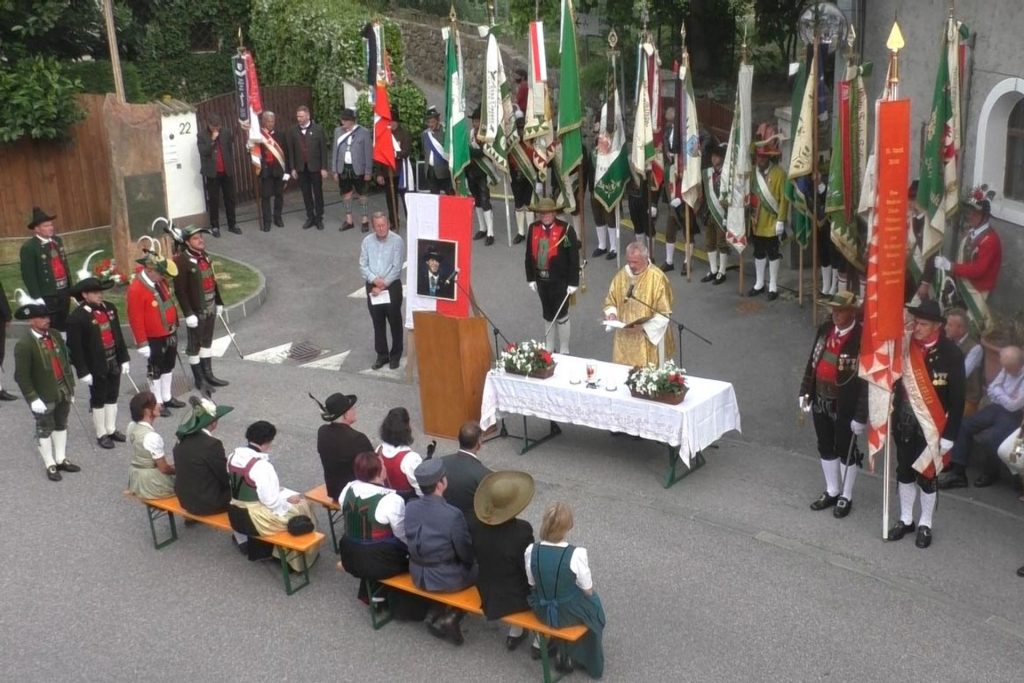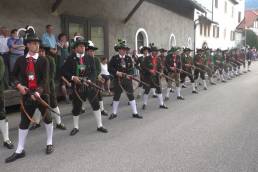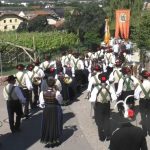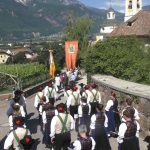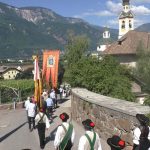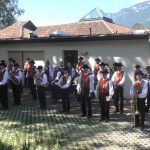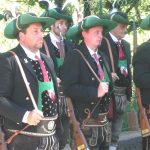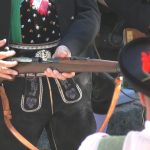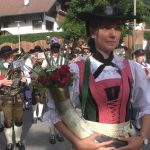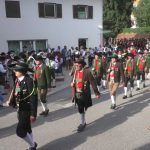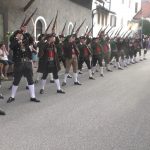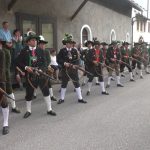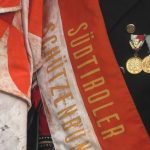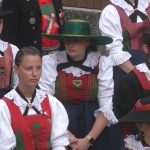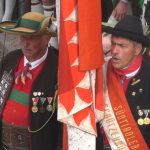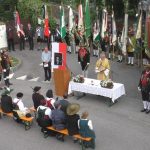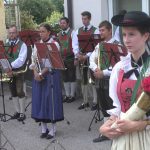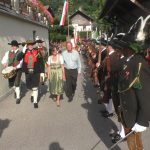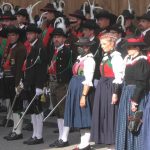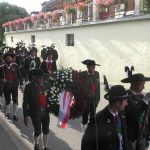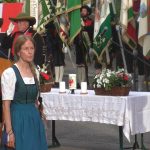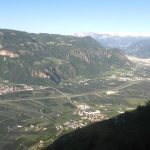South Tyrol, the story of a small country eternally unconquered
A journey through the Autonomous Province of Bolzano on the sixteenth anniversary of the “Notte dei Fuochi” (Night of Fires), on the edge of the always hostile coexistence between the German and Italian ethnic groups
A steep wall of gray rock interrupts the green of the steep woods that surround it and cover the rest of the Burgstall-Eck peak. From this mountain, at an elevation of about 1,000 meters, you can look down into the Etschtal valley. Below, the river cuts through the valley and flows south through vineyards, apple plantations, and villages with churches and houses with pointed roofs in the Habsburg style. Finally, it joins the horizon in Bolzano, among the square pale stone buildings built during the fascist period.
The mountain marks a border, although not a political one. On the opposite side begin the Trentino valleys that mark the end of the Germanic linguistic and cultural space. Where Trentino begins, South Tyrol ends and Italy begins, say many inhabitants of the Adige Valley, who almost all consider themselves South Tyroleans of German culture and language and not Italians. Even though they are Italian by passport.
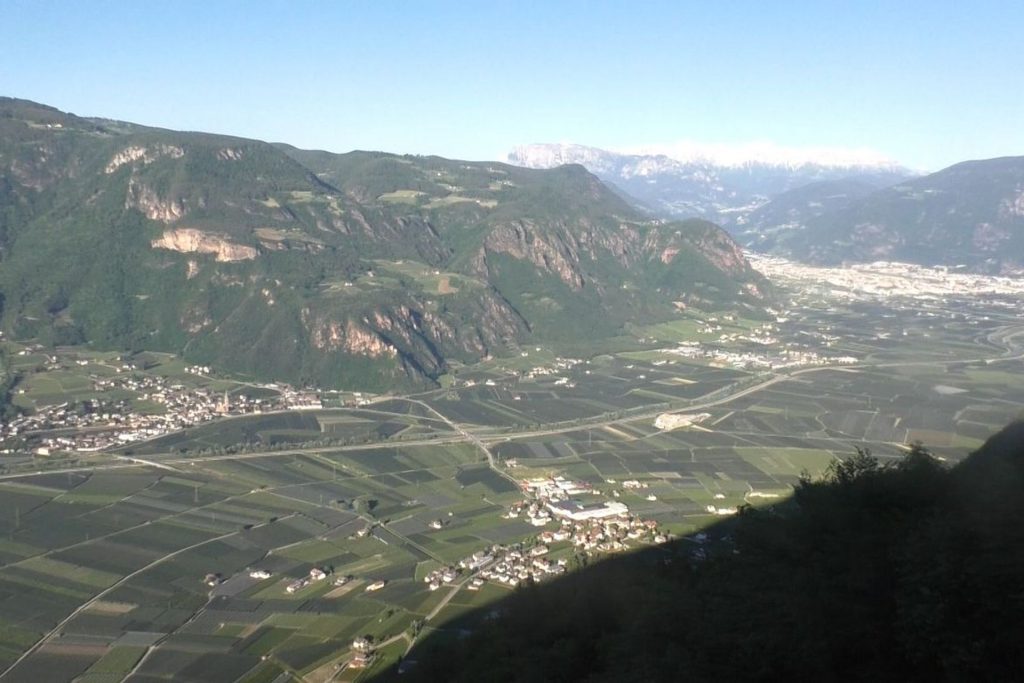
Five thousand activists of the Schützen, divided into 140 companies
On the rock face sits Hannes Unterkofler. The 37-year-old from Andrian, a village in the valley, works in Bolzano as a professional, but above all he is the local contact person of the Schützen, an organization spread throughout the German-speaking area and dedicated to the defense and preservation of its culture. In South Tyrol alone, it has 5,000 activists, divided into 140 companies.
“For us South Tyroleans it is easier to declare that we love our homeland (Heimatliebe) than the Germans in the Federal Republic,” he explains, “during the Nazi period we had already been annexed by Italy and therefore we do not feel directly guilty for the Nazi crimes. Among us, the sense of guilt and rejection for our history that instead the West Germans (Wessis) have is much less felt. Moreover, the persecution we suffered during and after fascism is still present in the memories of our families. We still feel very much the importance of passing on what was left to us by our ancestors.”
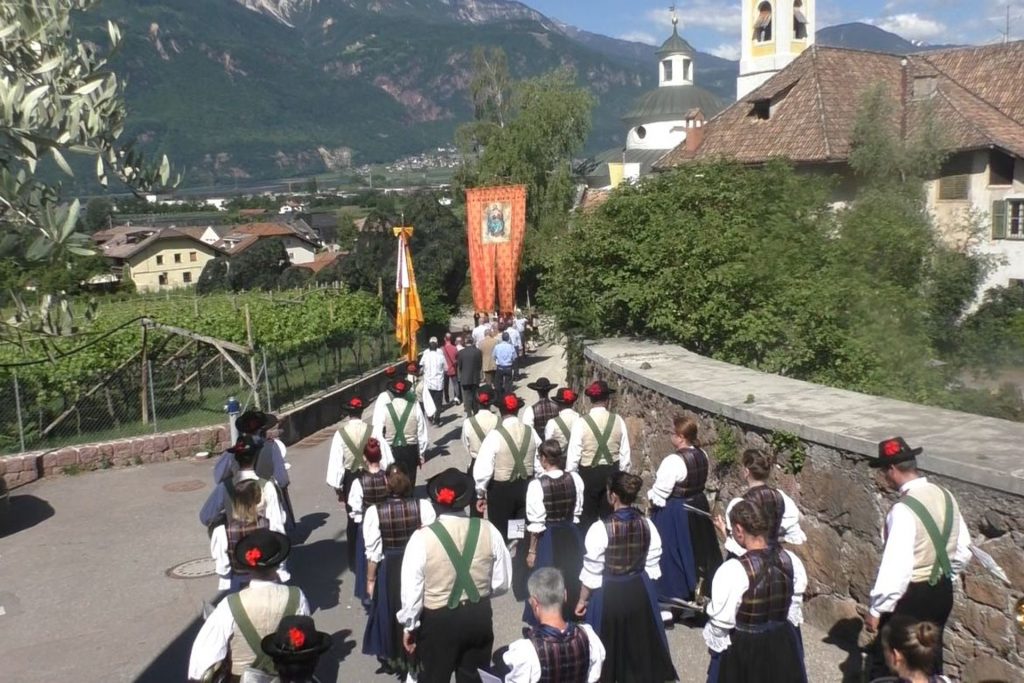
Autonomous” Germanic stock infiltrated between Trentino and Austria
Historically, populations of German language and culture have lived scattered throughout Central and Eastern Europe, from Alsace to the Volga. Over the centuries, each of these Germanic strains has developed a strong territorial rooting, defined as Heimat, integrated in a generic sense of belonging to the wider German linguistic and ethno-cultural community, called Vaterland.
The horrors of National Socialism wrought in the name of Germanicity have partly weakened identity in the Vaterland, much less in the Heimat. Especially in South Tyrol, whose history differs from that of the other Heimats mainly in relation to its relations with Italy. For centuries this region belonged to the Habsburg Empire.
When it was annexed to Italy at the end of the First World War, the population was predominantly German (89 percent) with Ladin (3.8 percent) and Italian (2.9 percent) minorities. The annexation marked the beginning of a policy of Italianization by the fascist regime, which prohibited the teaching of German (except in the catechism), German parties and newspapers and the use of the name “Südtirol”. Italian was imposed as the only official language, toponymy and many surnames were Italianized. In Bolzano and Merano several monuments to German-speaking poets and writers were demolished in favor of the construction of new urban districts, destined to accommodate thousands of Italian immigrants.
Mass immigration continued even after the end of Fascism, fueling the secessionist pressures of the German population despite the fact that many Fascist measures had been formally abolished. The 1940s and 1950s saw the rise of independence or autonomist parties and movements such as the Südtiroler Volksapartei (SVP), which brought together all of South Tyrol’s German political movements. But also armed groups such as the Befreiungsausschuss Südtirol (BAS), which attacked the Italian state with bomb and fire attacks. The “Night of Fires” (“Feuernacht”) of 1961, when the BAS blew up 49 electricity pylons, has gone down in history. In 1969 the Italian State and the SVP finally reached an agreement: the Germans agreed to remain within Italy in exchange for a strong linguistic, cultural, fiscal and political autonomy through the establishment of the Autonomous Province of Bolzano.
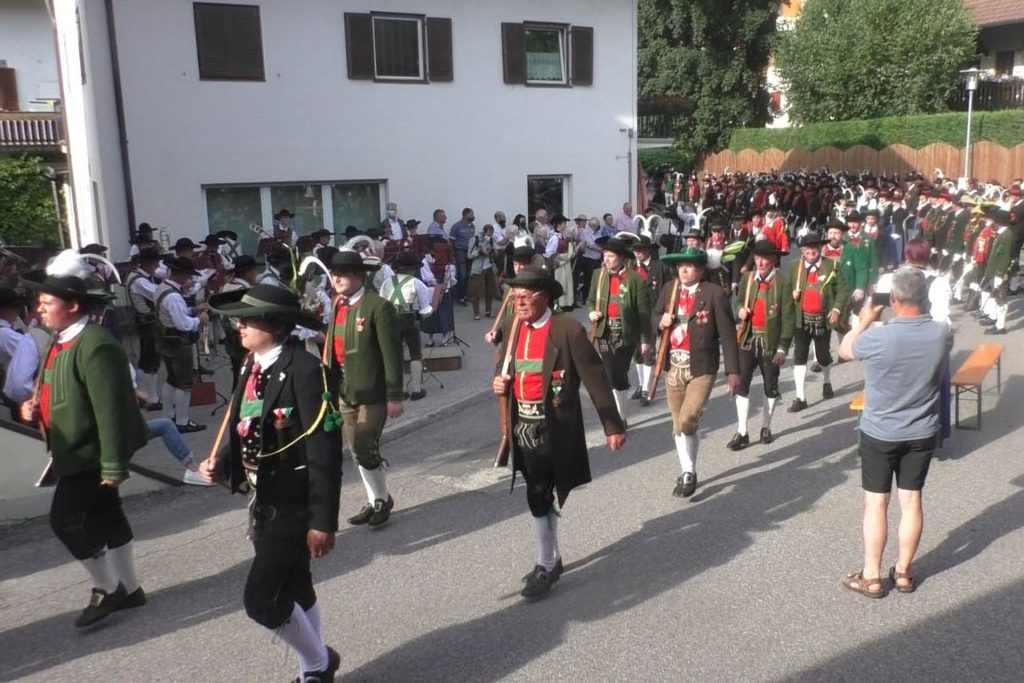
Sacred fires on the mountains in response to the violation of the Heimat
The memory of the “Feuernacht” is still strongly present among the Germans of South Tyrol. It is symbolically linked to a much older tradition, dating back to the Napoleonic invasions of the early 1800s. When the French invaded the territories inhabited by Germans, including the Tyrol, they were perceived as the bearers of the ideals of the French revolution, namely enlightenment and secularism.
Resistance movements inspired by Romantic and anti-Enlightenment ideals were born in all Germanic strains, and these were the ideal cement for the foundation of the Bismarckian Reich in 1870. In Tyrol, the religious authorities called upon the people to climb the mountains, set fire to them and swear an oath to Christ and their homeland (Heimat), rejecting foreign domination. Since then, the South Tyroleans have climbed into the mountains every year on the first Sunday after Pentecost and set fire to renew their oath.
It was no coincidence that the BAS carried out its attacks on this date, marking a symbolic continuity between its own cause and the anti-Napoleonic cause, the founding myth of modern Germany.
24 Regions to Europe: “Involve us in the Recovery Plan…”
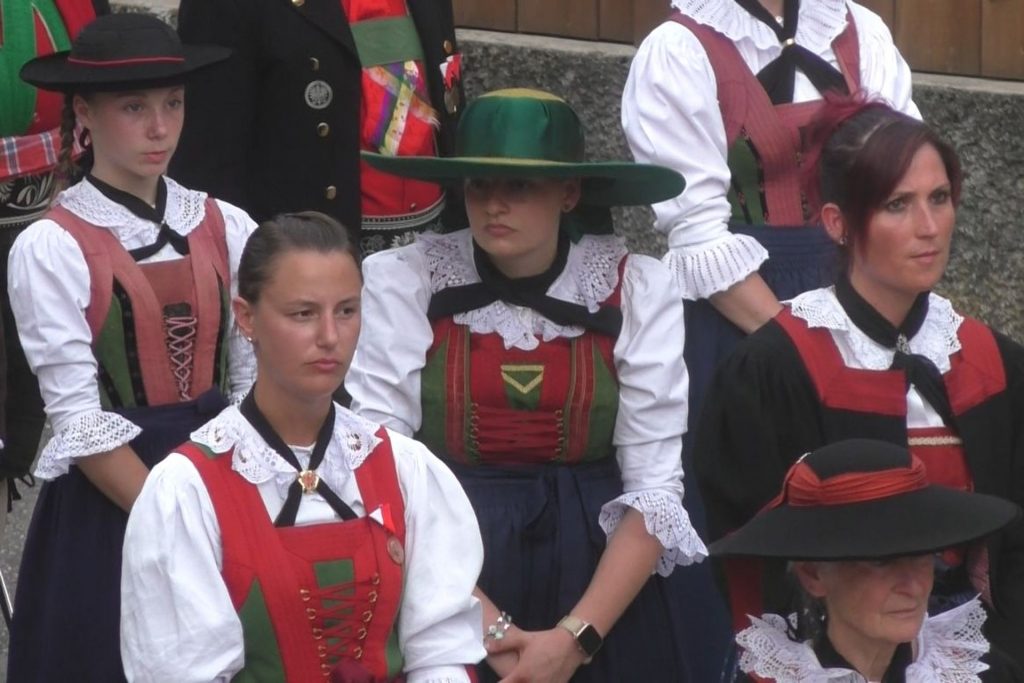
Above the silhouette of a huge eagle, fed by flames
On the rock face on which Hannes Unterkofler sits, several young people climb up, armed with petrol cans and torches which they place in strategic places among the rocks. Today the “Feuernacht” is celebrated and when it’s night the torches will draw in the dark the silhouette of a huge Tyrolean eagle, which will be seen from all over the valley. Each village will set its own fire on a different mountain. The inhabitants of Andriano climbed the Burgstall-Eck today. Lots of kids but also children and babies often in the arms of their parents and elderly people attached to the arm of a child or grandchild.
“It’s not a political gesture,” Unterkofer explains, “but a moment of tradition and renewed unity among all Tyroleans.” As soon as darkness falls, all the mountains overlooking the valley are illuminated with dozens of lights, some small, some large, forming patterns: eagles, crosses, hearts.
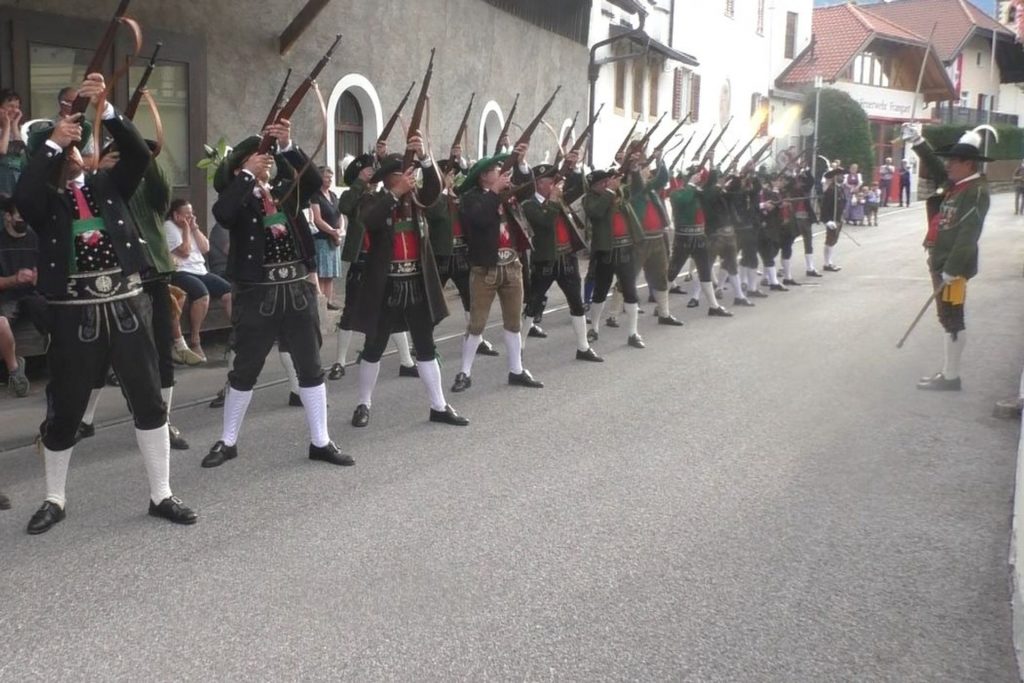
Around “Feurnacht” struggle over interpretation of facts
Despite being a formally apolitical moment, “Feurnacht” 2021 is monopolizing local political debate.
“Sixty years after the attacks, both Germans and Italians in the province are questioning the value of those gestures, giving each other very different answers,” explains Andrea Di Michele, professor of contemporary history at the University of Bolzano, “for some Germans it was a necessary act, for others it slowed down the process towards autonomy. For many Italians, instead, it was pure terrorism. Regardless of linguistic affiliation, there is no shared interpretation of the history of this region“.
Recently the SVP has proposed the establishment of a research and analysis commission to form a shared historical interpretation and conscience. The question also arises as to whether there is a lowest common denominator of identity, which can unite all South Tyrolean citizens regardless of their ethno-linguistic affiliation.
#AltoAdige, accordo di governo tra @SVP_Suedtirol e Lega: la presa di posizione del Presidente @fgiudiceandrea : “Le nostre priorità sono #Europa, #autonomia, #giovani e #industria – su questi punti siamo pronti a dare il nostro contributo costruttivo”
➡️https://t.co/sBCnIJ9R63 pic.twitter.com/1c6BRsbSRE— UVS Assoimprenditori (@uvs_assoim) January 8, 2019
Today, 69.4 percent of the population of the province of Bolzano is German-speaking and of German ethnicity, Ladins make up 4.5 percent and Italians 26 percent, concentrated mainly in the urban centers of Bolzano and Merano. Local politics is strongly in the hands of the SVP, which has ruled uninterruptedly since the post-war period and now represents 41% of the vote. According to the autonomy statute, the provincial government is composed of parties from both German and Italian parties. The stable hegemony of the SVP on the German side has pushed it to find from time to time Italian allies of convenience, generally much weaker and subordinate. After a long alliance with the PD, as of 2018 it is allied with the League (11.1 percent), Italy’s leading party followed by the Democrats (3.8 percent) and Fratelli d’Italia (1.7 percent).
Die Freiheitlichen and Süd-Tiroler Freiheit around 6 percent
On the German side, the two other significant parties sitting in the local parliament are Die Freiheitlichen (6.2 percent), the South Tyrolean expression of the Austrian right-wing FPÖ, and the independentists of Süd-Tiroler Freiheit (6 percent). Leading representatives of all German parties were present this year in Frangarto, a village on the outskirts of Bolzano, where the day before the “Feuernacht” a Schützen demonstration was held in honor of the freedom fighters (Freiheitskämpfer) of the BAS, whom Italians often call terrorists. Hundreds of people in Tyrolean uniforms marched framed through the streets of the village, the women in colorful dresses and long skirts, the men in short leather pants, white wool socks raised to their knees, feathered hats and jackets often adorned with medals. Some have a sword tied to their waists, others hold long rifles, which at the appointed signal point to the sky to fire a shot in unison.
That Italian Confederation born and buried in Zurich
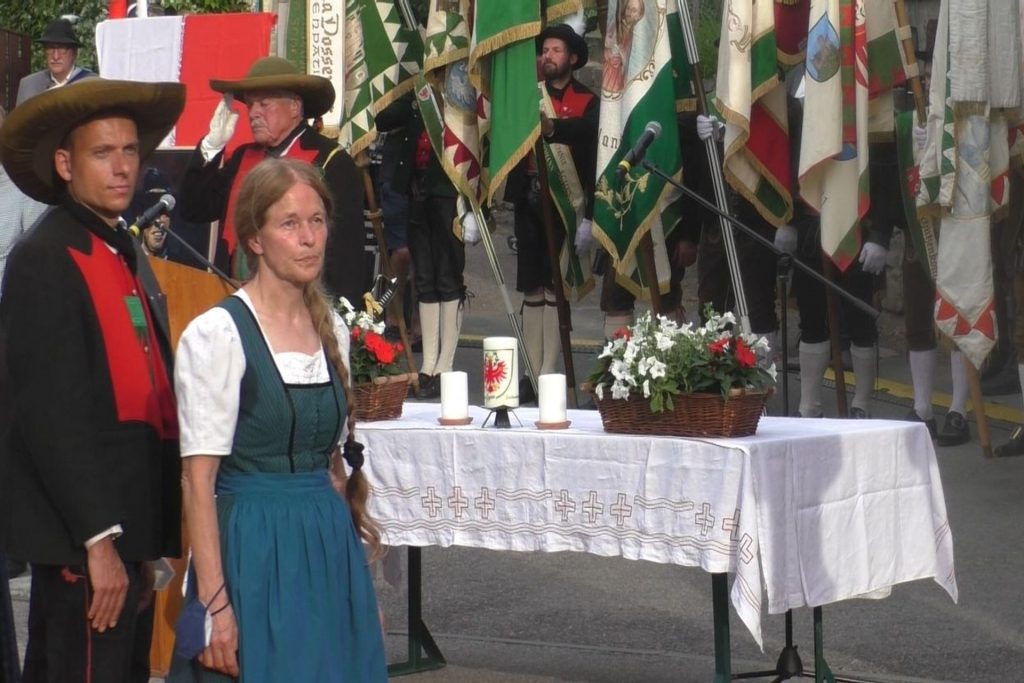
Sven Knoll: “Choice between return to Austria, independence or Italy”
When they arrived in front of the memorial plaque of Sepp Kerschbauer, one of the founders of the BAS, a native of this country, they stopped and celebrated mass while remaining in frame. At the reading of the Gospel, Eva Klotz, daughter of Georg, the man behind the 1961 pylon explosion, steps up to the altar. For a long time a member of parliament in the province for the Süd-Tiroler Freiheit, today she has retired from institutional politics, leaving room for her daugther Sven Knoll, also in the front line at the event dressed in the uniform of the Schützen. Born in 1980, he is descended from a family of German Ostvertriebene, who during World War II had to flee the degermanization of Silesia (now part of Poland) and expresses in parliament the most decisive separatist line.
“We ask for a referendum through which the South Tyroleans decide whether to stay inside Italy or become independent or whether to reunify with Austria, which for me is the best solution,” he explains.
Italien plant, Tausenden Carabinieri, Finanzern, Militärs sowie deren Angehörigen das Wahlrecht in Süd-Tirol zu geben, auch wenn sie keinen fixen Wohnsitz hier haben. Das würde die Wahlergebnisse massiv verfälschen und muss verhindert werden!https://t.co/L2PRnPGfV8
— Süd-Tiroler Freiheit (@tirolerfreiheit) June 18, 2021
The Süd-Tiroler Freiheit makes the most of the ethno-identity issue: among its demands are the defense of the German toponymy, the use of German by public employees, the removal of fascist buildings and symbols, the granting of Austrian nationality to German-speaking South Tyroleans.
Knoll realizes that he can freely express concepts that in Germany would be stigmatized in the press as far-right.
“We often receive parliamentary delegations from the German states,” he says, “and many of their representatives are impressed by the fact that here we can express ourselves freely and positively about our Austrian identity. In today’s Germany it is very difficult for me just to tell the story of my family’s escape from Silesia because certain historical events have become taboo.”
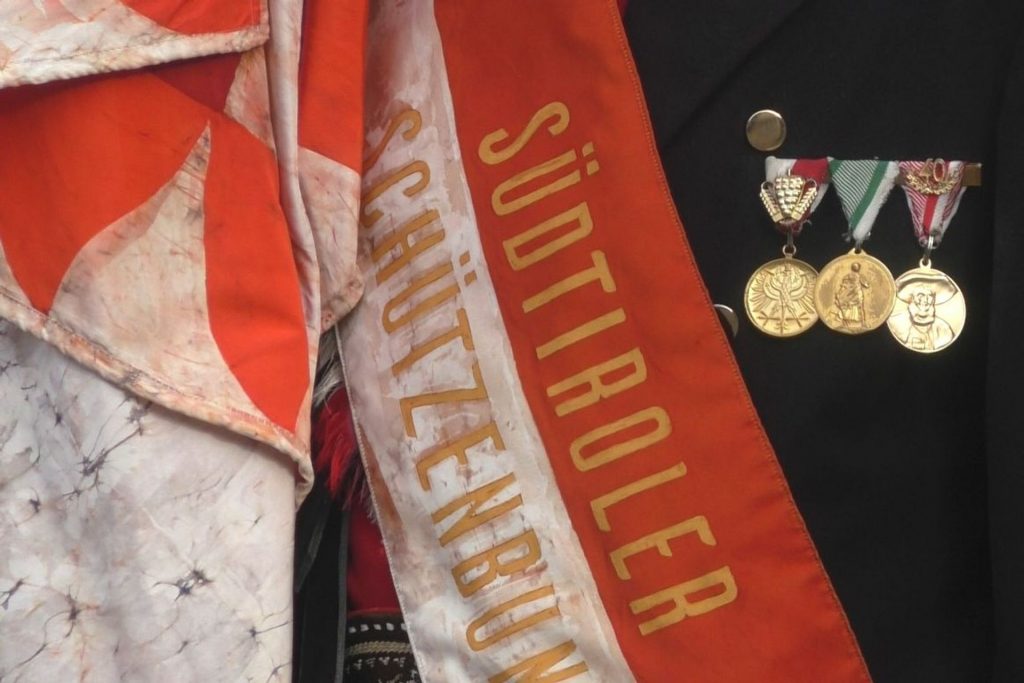
Die Freiheitlichen: “Switzerland is what we have to achieve”
Present in Frangarto, also wearing the uniform of the Schützen, is Andreas Leiter Reber, group leader in the provincial parliament for Die Freiheitlichen. His party is not calling for secession but for the strengthening of autonomy through the development of a strong South Tyrolean identity.
“Switzerland is what we must achieve,” says the 39-year-old, “we must identify ourselves first and foremost as South Tyroleans before we identify ourselves as members of the language group.”
For Leiter Reber, the last hundred years of history that differentiate the character of South Tyrol from that of other Germanic strains cannot be erased. “We speak three languages alone,” he concludes.
Günther Dissertori: a South Tyrolean at the ETH Zurich
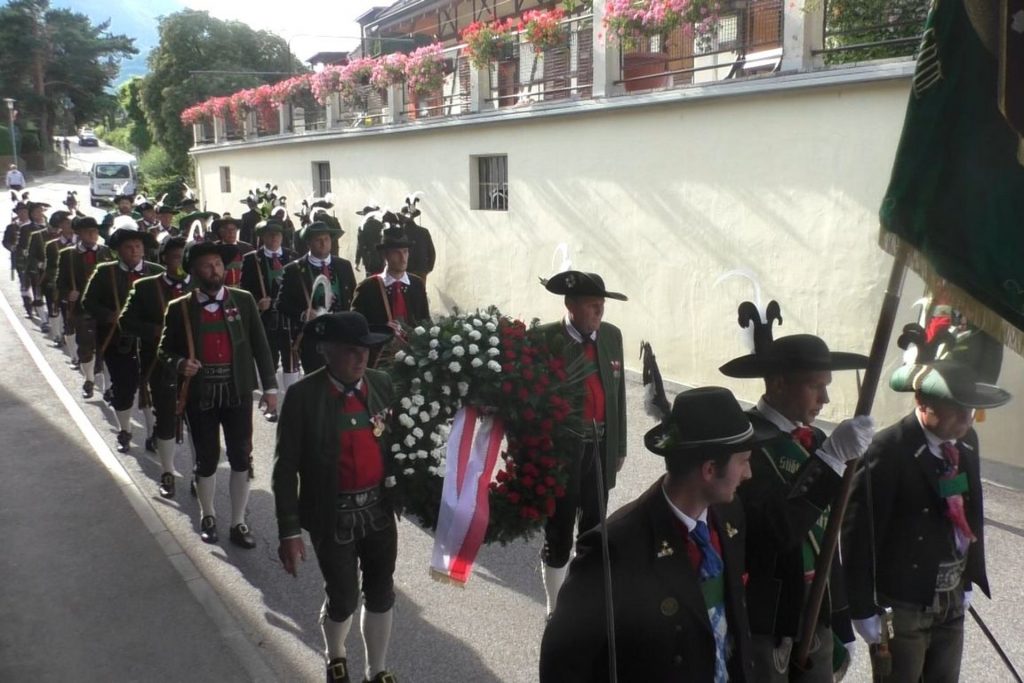
Historian: “A specific South Tyrolean identity is growing…”
According to historian Di Michele, this view is growing among citizens. “In recent decades we are witnessing a slow but progressive development of a specific South Tyrolean/South Tyrolean identity,” he explains. “Especially among Germans.”
And further: “This stems from the narrative of South Tyrolean history as a success story: namely that of a people who did not bow to colonization, gained autonomy, increased wealth and defended their language and culture. This stands apart from the history of Austria”.
These positions are widespread in important currents of the SVP, which expresses “a strong ruling class that controls the levers of administration and the stock exchange“. For this reason, many of them think that leaving Italy would bring more disadvantages than advantages.
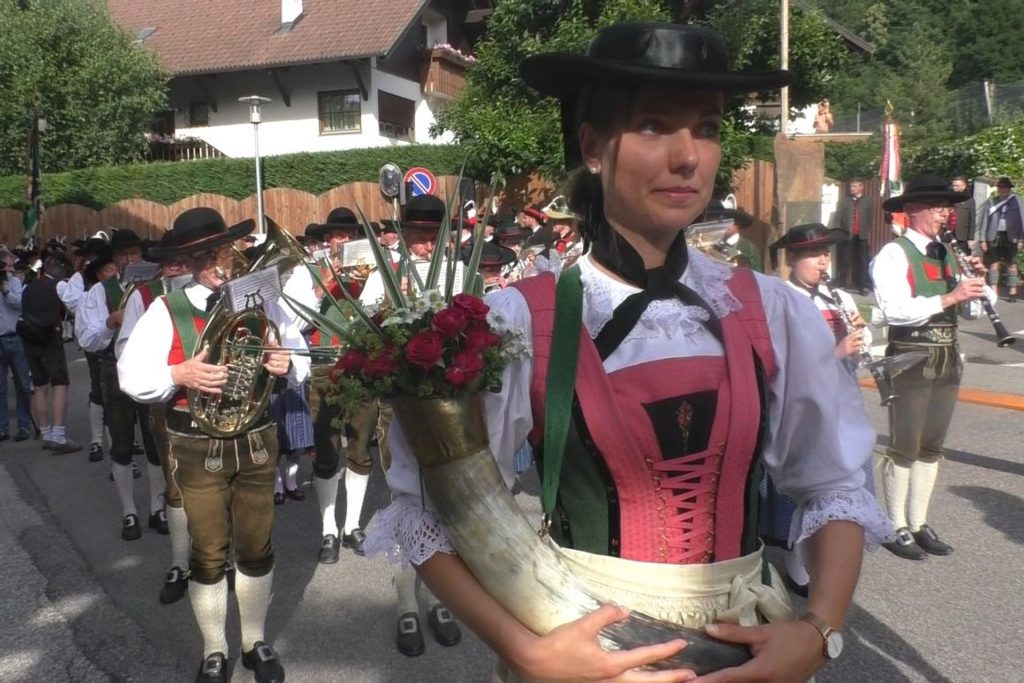
Italian and German speakers united by a common, mutual victimhood
The identity definition for both Germans and Italians in this region is based on a victimistic view. Andrea Di Michele continues: “The narrative of the Germans is based on the memory of the oppressions suffered at the hands of the Italians, which conceals a certain responsibility: namely the collaborationist activities of the South Tyroleans during the Nazi occupation between 1943 and 1945 and the persecution of the Jews in these parts”.
On the Italian side, however, the victimhood is based mainly on two factors: the purge of the fascist administrative apparatus by the Wehrmacht and its South Tyrolean associates in 1943, which allows the nationalist and neo-fascist right to claim an anti-Nazi root and therefore a legitimacy; the widespread sense of inferiority of the Italians in front of the German hegemony in the management of political and economic power.
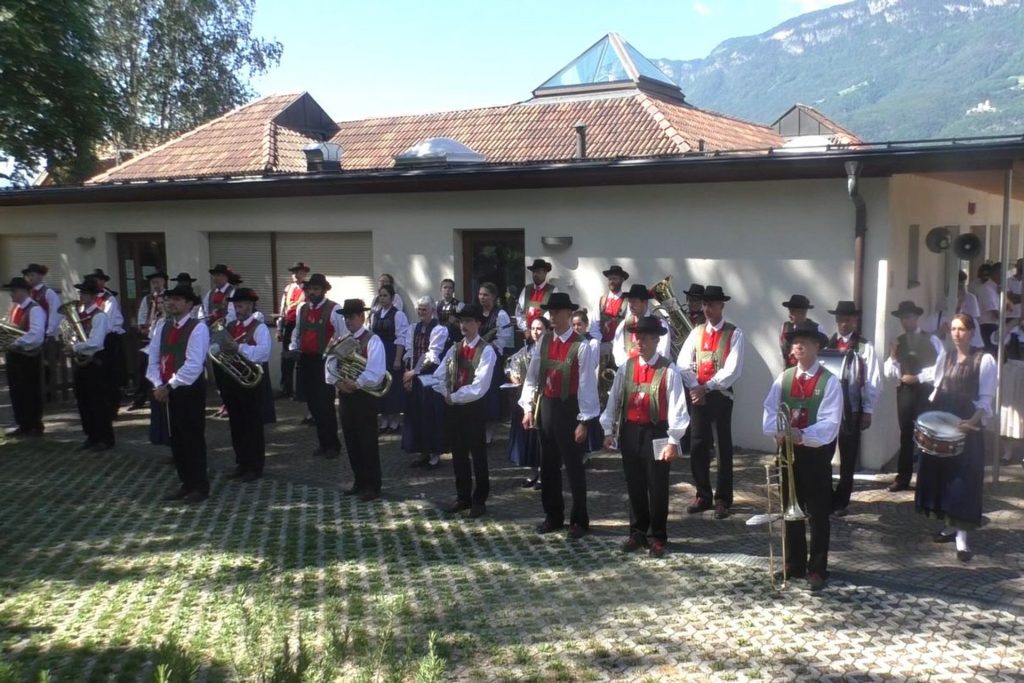
The Italian minority separated not only by the Talvera River
Bolzano is an architecturally divided city. The Habsburg palaces of the old town stand on the eastern bank of the Talvera; on the other side are the Italian quarters, which bear the imprint of the fascist and working-class buildings of the 1950s and 1960s. As soon as you cross the river, you come across the Victory Monument, an imposing white stone arch covered with lictor’s fasces. The Fascist regime not only wanted to create districts to accommodate Italian immigration, but also to conquer Bolzano architecturally with its buildings and symbols. The Gries-San Quirino district starts from the Victory Monument: imposing rectangular buildings of light-colored stone, wide streets, arches, rectangular towers. In a few minutes you arrive at the former Casa littoria on whose facade is clearly visible a bas-relief of Benito Mussolini giving the Roman salute.
The withdrawal of the DDL “Autonomy” disrespect to Italy that works
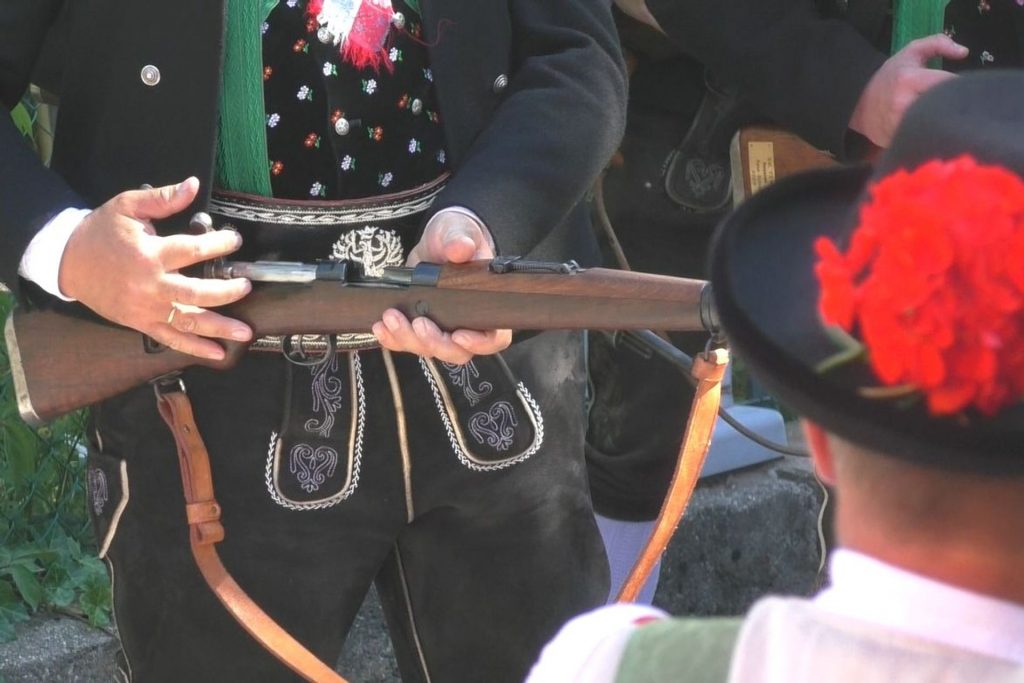
The bombs of the 80’s and the latent conflict between two factions
Walking along these streets, one immediately notices how no one here uses German and how different society is from the rest of the province. “When we were kids, we almost all defined ourselves as fascists,” says Alessandro, born in Bolzano in 1977 to a family of Trentino, Veneto, Lombard and Calabrian origin who has been here for three generations. “Being fascist was an aesthetic factor but also a sense of protection. I remember as a child the repeated evacuations from school because of the threats of German terrorists to set off bombs. I remember the windows of my house being broken as a result of one of these bombs exploding two blocks away. With the German kids we would often fight and throw stones at each other. Today the situation has changed a lot thanks to the economic well-being, but in case this would be lacking the tensions could quickly re-explode”.
#MdT 25/06/1967 – Cima Vallona. Attentato terroristico dei separatisti sudtirolesi del Befreiungsausschuss Südtirol pic.twitter.com/ah1sIg1RCY
— Johannes Bückler (@JohannesBuckler) June 25, 2015
The bombs to which he refers were planted in the 1980s by the terrorist group Ein Tirol. At the same time, attacks were carried out by two other Italian terrorist groups: the Movimento Italiano Alto Adige and the Associazione Protezione Italiani.
This context explains why the neo-fascist right has always had a good following among the Italians in South Tyrol. Until its dissolution, the Italian Social Movement had long been the leading Italian party in the city of Bolzano, where three Casapound city councilors were elected in 2016, but were recently not confirmed. According to Alessandro, this should be framed in the fact that Italians in Bolzano differ from the rest of their compatriots mainly “because of the memory of the bombing season and the coexistence with another population perceived as hostile.”
From Habsburg Verantwortung to ostentatious irresponsibility
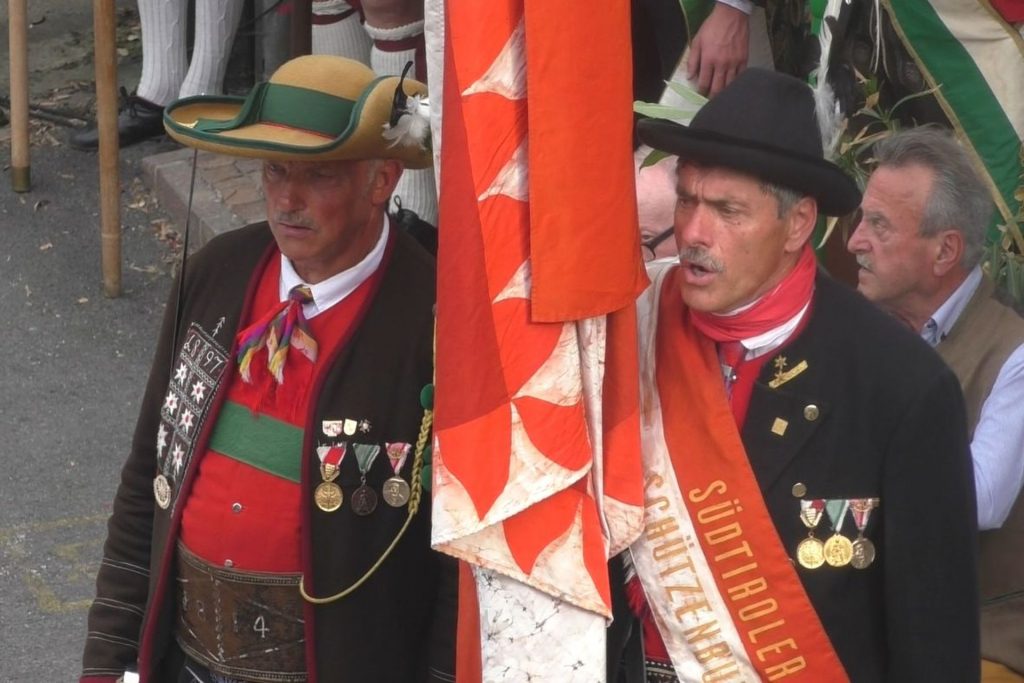
A slice of Italy without traditions, customs or dialects
According to many people spoken to, it is not easy to be Italian in this region. “We are children of Italianization,” they say, “we don’t have a specific dialect, customs or traditions of this territory. It is therefore easier for those who feel Italian to identify with a nationalist right-wing rather than a local identity.”
According to Filippo Maturi, a member of the Rome parliament of the Lega, born and raised in Bolzano, Italians feel like second-class citizens. No longer so much for ethnic reasons, but mostly for economic and social ones.
“Most Italian political parties have not developed a valid ruling class at the local level. Even though the Statute of Autonomy guarantees the presence of Italian parties in local government, they remain subordinate to the SVP, which instead has a strong and prepared ruling class. This makes Italians feel they are excluded from the levers of economic and political power,” he says.
The two new interethnic movements: the Greens and Team K of former Cricketers
Despite the divisions in recent years, a number of interethnic parties have emerged, i.e. parties that aspire to represent voters regardless of their ethno-linguistic affiliation. This is the case of the Greens (6.8 percent) and Team K, a movement founded by former activists of the 5 Star Movement, which in the last provincial elections took 15.2 percent, imposing itself as the second force after the SVP. Its founder is Paul Köllensperger, a perfectly bilingual Bolzano native. “I left the Movement because it didn’t understand that this territory needs specific programs that allow me to speak to all linguistic components and not only to Italians,” he explains.
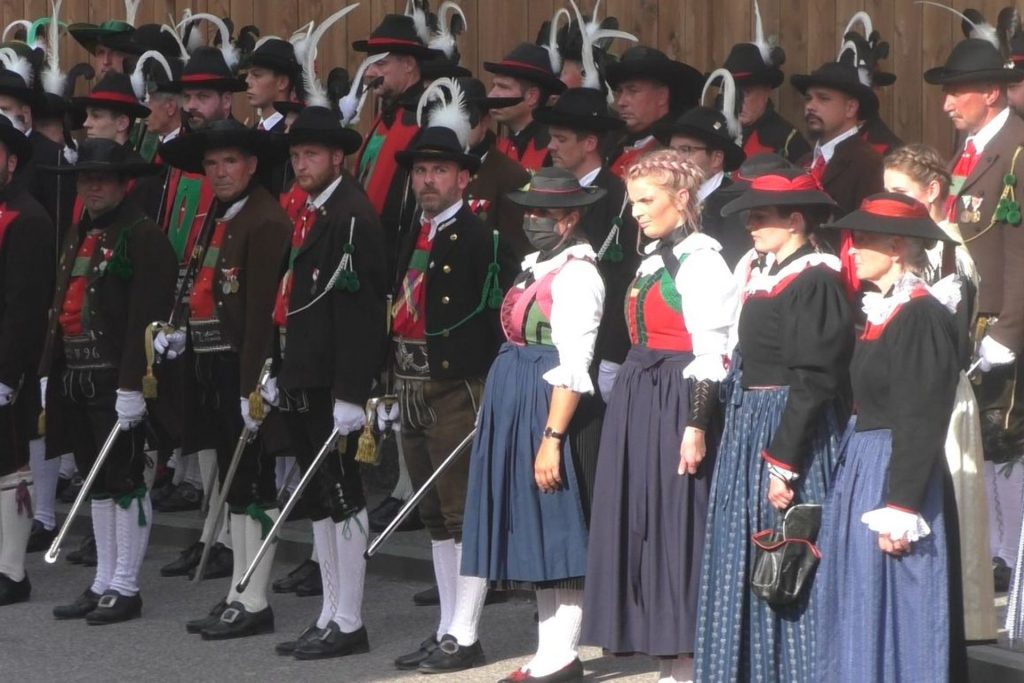
A local majority, a minority in Italy: this is how the separation works
“Here, the electorate is unlikely to vote for movements from other language groups. The South Tyrolean model is based on a separation that is functional to preserve the German component, which is in the majority here but in the minority nationwide,” Köllensperger continues. For him, therefore, it is necessary to overcome ethnic fences by creating trilingual schools instead of the separate ones currently in place.
“The younger generation feels the ethnic divide much less, yet Germans go to German schools and Italians to Italian schools. This makes it difficult for mixed friendships to form: most kids stay among people from their own language group and hang out at local landmarks in their own community.”
Only by overcoming this approach, so Paul Köllensperger, will it be possible to develop a true shared South Tyrolean/South Tyrolean identity that overcomes divisions and makes history.
Italy, because differentiated autonomy “is” the Constitution
